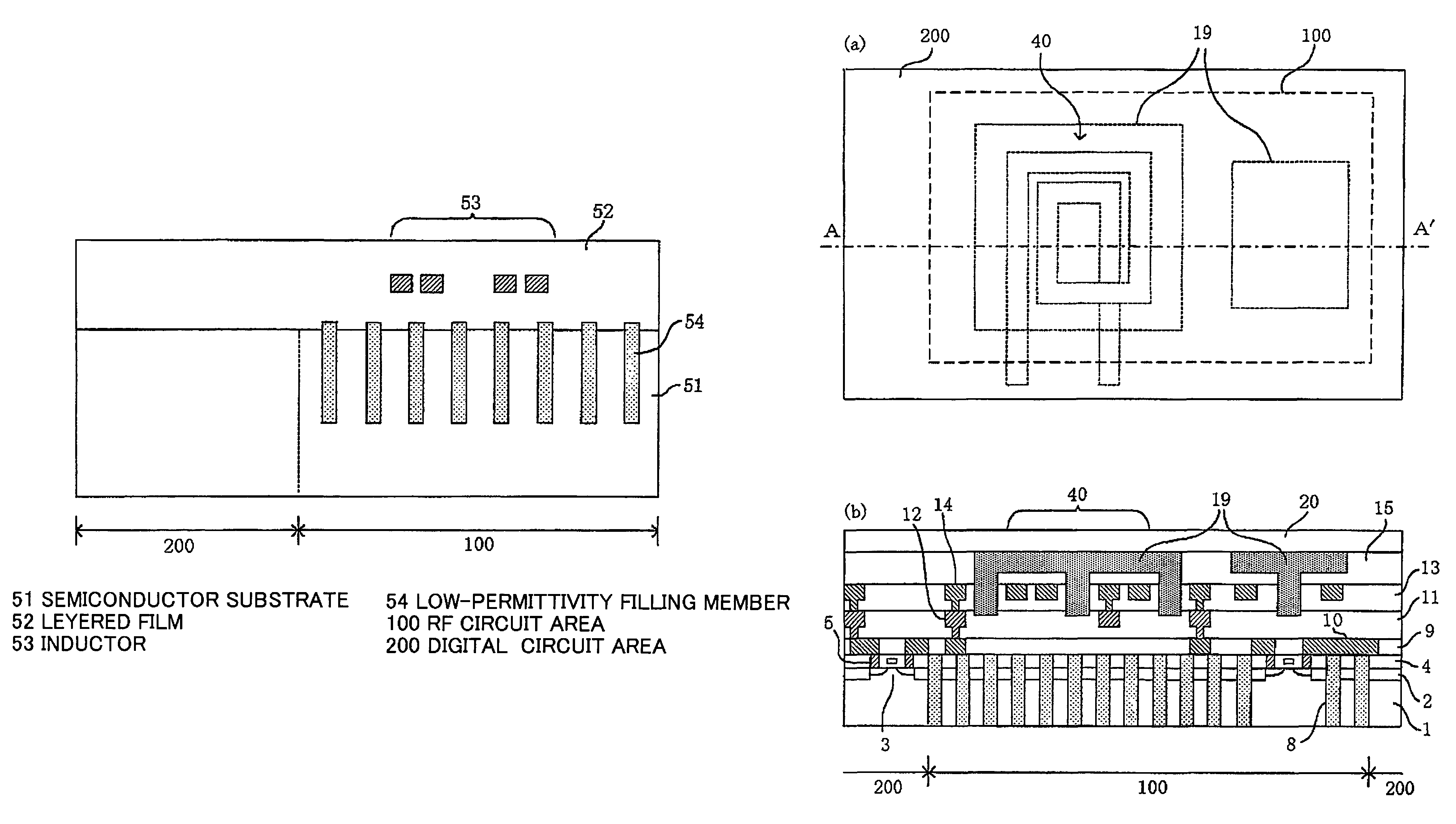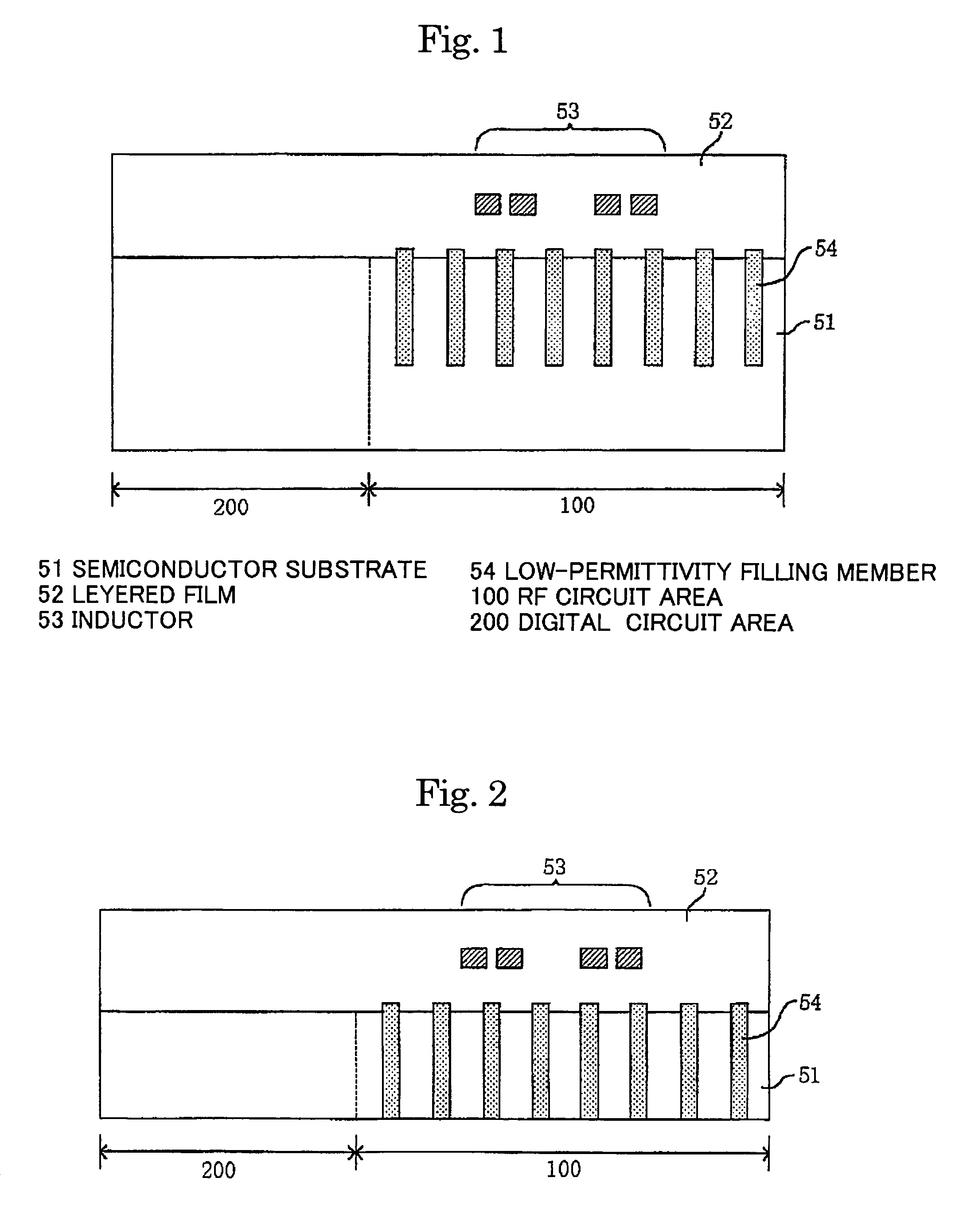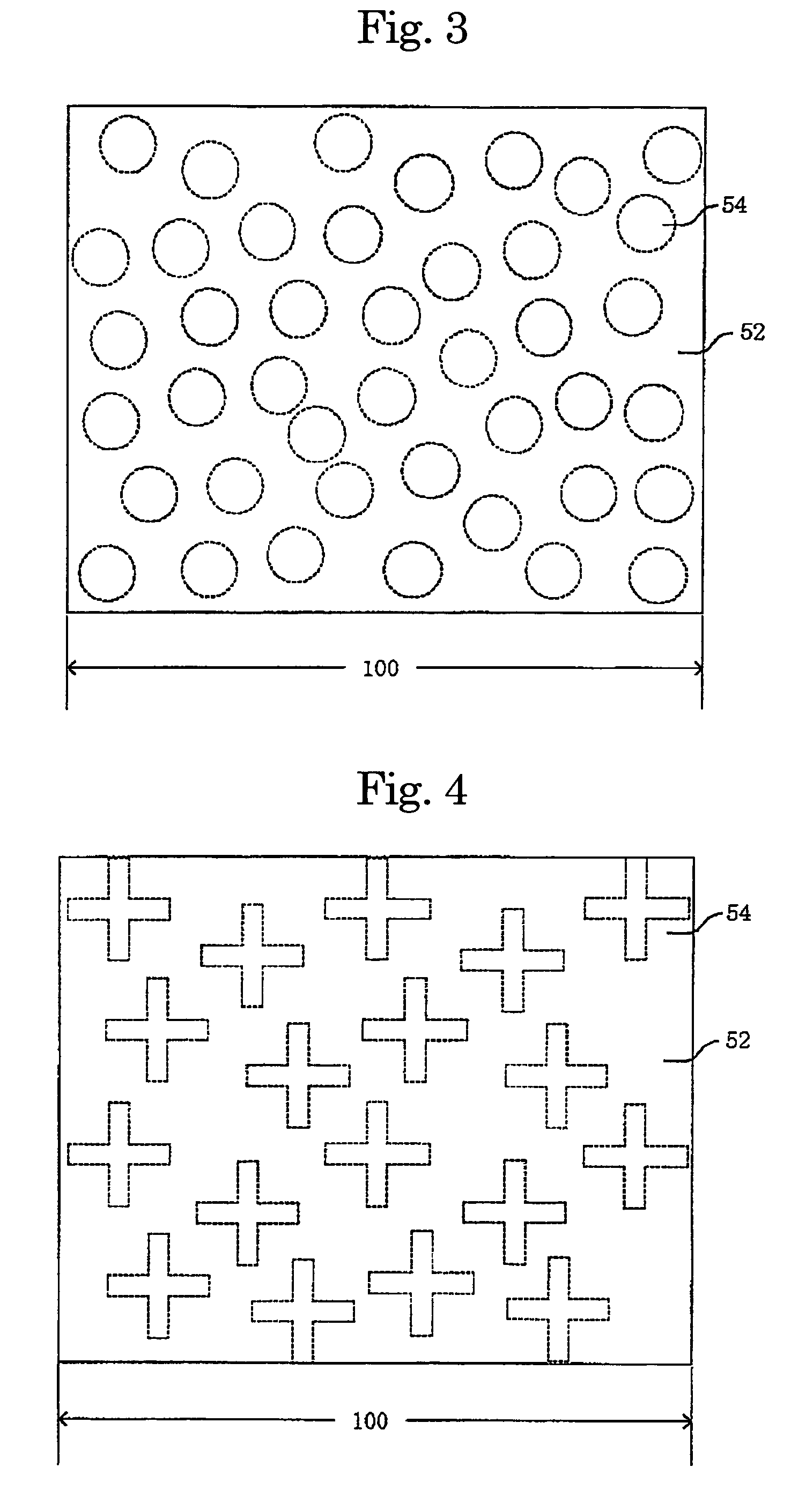Semiconductor device and method for manufacturing same
a semiconductor and semiconductor technology, applied in semiconductor devices, semiconductor/solid-state device details, semiconductors, etc., can solve the problems of reducing the parasitic capacitance of the substrate, limiting the embedded insulating film to a silicon oxide film etc. having a higher heat resistance, and the conventional technique does not reduce the parasitic capacitance well with respect to the substrate. , the effect of suppressing the coupling capacitance and small thickness of the substra
- Summary
- Abstract
- Description
- Claims
- Application Information
AI Technical Summary
Benefits of technology
Problems solved by technology
Method used
Image
Examples
examples
[0130]Preferable examples of the present invention will be described in detail with reference to the drawings.
first example
[0131]FIG. 8(a) is a top plan view showing the first example of the present invention, and FIG. 8(b) is a sectional view taken along line A-A′ in FIG. 8(a). On a silicon semiconductor substrate are provided an RF circuit area (high-frequency signal processing circuit area) 100 and a digital circuit area 200. MOSFETs 3 are formed in the regions isolated by shallow-trench-isolation film 2 on the silicon substrate 1, to configure CMOS circuits. In the silicon substrate of the RF circuit area 100 are located a plurality of low-permittivity insulator rods 8 in which low-permittivity insulator is embedded. In the present example, the low-permittivity insulator rods 8 penetrate the first interlevel dielectric film isolating the CMOS transistors and multi-layered interconnects to reach the internal of the silicon substrate. More specifically, the low-permittivity insulator rods are formed after all the CMOS transistor forming steps are finished; in other words, after all the high-temperatur...
second example
[0145]Referring to FIG. 19(a), the second example of the present invention is similar to the first example shown in FIG. 8 except that high-permeability isolation rods 21 without including a planar member are formed in the core of the inductor and the periphery thereof instead of the high-permeability isolation regions (19) each including a planar member and a rod and that the bottom surface of the low-permittivity insulating rods 8 is not exposed from the bottom surface of the substrate.
[0146]The fabrication method of the present example is similar to that of the first example in the steps up to the step shown in FIG. 15. Thereafter, the fifth interlevel dielectric film 15 is grown on the interconnect layers configuring the inductor 40, followed by forming openings penetrating the fifth interlevel dielectric film 15 and the fourth interlevel dielectric film 13 to reach the third interlevel dielectric film 11. The diameter of the openings is generally 1 μm to 2 μm, but not limited t...
PUM
 Login to View More
Login to View More Abstract
Description
Claims
Application Information
 Login to View More
Login to View More - R&D
- Intellectual Property
- Life Sciences
- Materials
- Tech Scout
- Unparalleled Data Quality
- Higher Quality Content
- 60% Fewer Hallucinations
Browse by: Latest US Patents, China's latest patents, Technical Efficacy Thesaurus, Application Domain, Technology Topic, Popular Technical Reports.
© 2025 PatSnap. All rights reserved.Legal|Privacy policy|Modern Slavery Act Transparency Statement|Sitemap|About US| Contact US: help@patsnap.com



